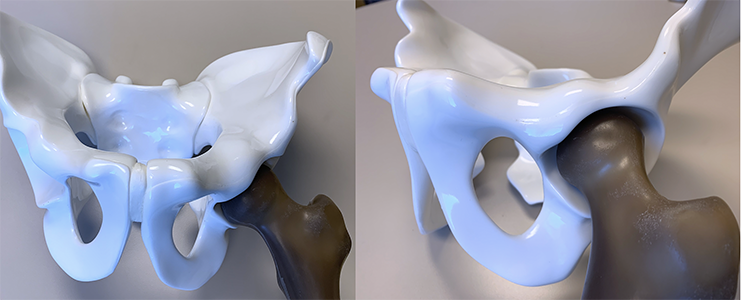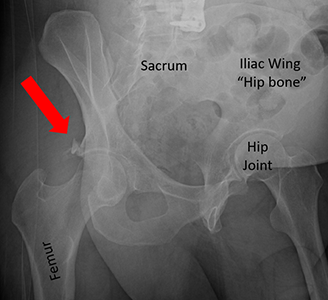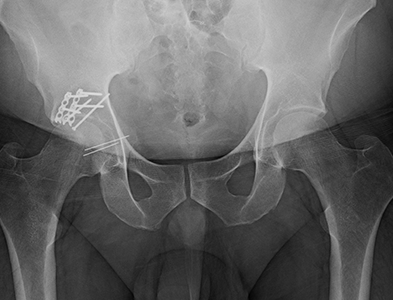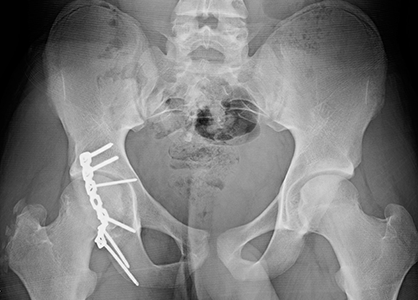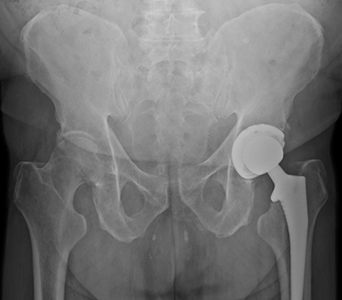Physical Therapy Videos - Hip and Pelvis
What Is It?
A hip socket fracture is when the socket part of your hip joint breaks. Your hip joint helps you move your leg when you walk. It is made of two bones and works like a ball and socket. The ball is at the top of your thigh bone and is called the femoral head. The socket is part of your pelvis and is called the acetabulum. Both the ball and socket have a smooth layer called cartilage between them, which helps them move easily. A posterior wall break is when the back (posterior) part of your hip socket breaks. This part is important because it helps keep the ball in the socket. If it breaks, the ball can move out of place.
How It Happens
Anyone can break their hip socket. Younger people might break it in a big accident, like a car crash or a fall from high up. Older people can break it in a small accident, like tripping and falling down. A break of the back wall of the socket often happens in car crashes when your knee hits the dashboard. This pushes your thigh bone against the back part of your hip socket and breaks it.
First Steps
A broken hip socket hurts a lot and makes it hard to walk. If you have this injury, you should go to the emergency room. You might also have other injuries, so doctors will check your whole body. They will take X-rays and maybe a CT scan to see the broken bone better. If the ball is out of the socket, doctors might need to put it back in place. They will give you medicine to help with the pain and may use weights to take pressure off your hip.
Treatment
Most of the time, this injury needs surgery. But in some cases, doctors might not operate. The goal is to fix the broken bone so it heals correctly and keeps the ball in the socket. During surgery, you will be asleep, and doctors might use screws, plates, or even a hip replacement to fix your hip. Surgery can be long, and you might need a blood transfusion.
Recovery
After surgery, you will work with a therapist to get your strength back and learn to walk again. Your doctor will tell you how much weight you can put on your leg and how much you can move your hip. It's important to follow these instructions to heal well. You might need pain medicine and blood thinners to help prevent blood clots. You will also need to do exercises at home that you learn in therapy to help you recover faster.
Long Term
After surgery, you might need a walker, crutches, or a cane. Physical therapy can help you get back to walking by working on your strength, balance, and endurance. Complications can happen, like blood clots, infections, trouble walking, hip stiffness, and hip arthritis. Arthritis is common after a hip socket fracture of the posterior wall. Fixing the ball and socket usually helps, but it might not stop all arthritis from happening. This means your hip might hurt and be stiff for a long time. Sometimes, you might need a hip replacement. There can also be problems with a hip replacement, like the ball moving out of place or your legs being different lengths. If your bone doesn't heal right, you might need more treatment. Extra bone might grow around your hip and cause pain and stiffness. Treatment can help, but it might not work for everyone. If an infection happens you might need more surgery and medicine. Your treatment team wants the best outcome for you, so following their instructions can help prevent many problems and help you recover well.
Physical Therapy Videos - Hip and Pelvis
More Information
---
Justin Haller, MD
Edited by the OTA Patient Education Committee
All pictures taken from the personal collection of Dr. Haller and Christopher Domes, MD


